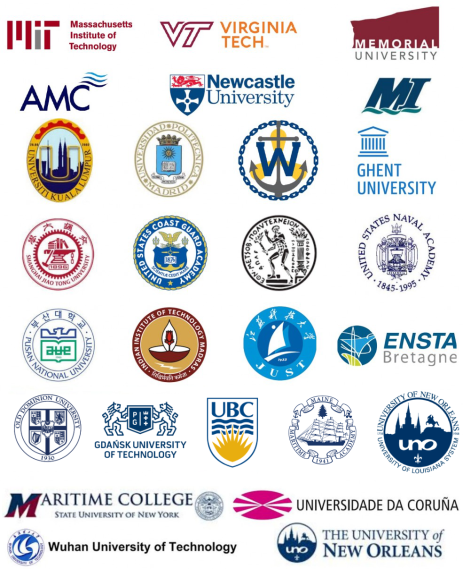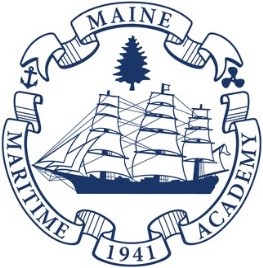HydroComp, Inc. Interviews Professors Lothar Birk and Douglas Read.
The pace of technology is mandating that we produce highly skilled and efficient engineers. Since 2000, the number of students specializing in engineering has more than doubled, and a number of them go on to ![]() become naval architects or marine engineers. Experts estimate that in 2017, 116,000 bachelor degrees were awarded to students who majored in engineering. At HydroComp, we believe that it is important to support these future generations of pioneers by offering Academic Lab Kits to qualified institutions. We recently interviewed two different university professors about their experiences.
become naval architects or marine engineers. Experts estimate that in 2017, 116,000 bachelor degrees were awarded to students who majored in engineering. At HydroComp, we believe that it is important to support these future generations of pioneers by offering Academic Lab Kits to qualified institutions. We recently interviewed two different university professors about their experiences.
With almost 30 years of full-time work in academia under his belt, Lothar Birk is a professor of Naval Architecture and Marine Engineering at the University of New Orleans, and has been the chair of the department since 2010. “The academic endeavor provides a lot of freedom to pursue topics of interest to me,” says Lothar. “It also offers the opportunity to explore and develop new methods and systems.”
 Lothar has a passion for the industry that he shares with his students. “Boats and ships are simply amazing systems,” he says. “That fascination… struck me at a young age and has stuck with me.”
Lothar has a passion for the industry that he shares with his students. “Boats and ships are simply amazing systems,” he says. “That fascination… struck me at a young age and has stuck with me.”
The University of New Orleans had already been using NavCad as an instruction tool when Lothar arrived there in 2004, and he took to it immediately. “Essentially there is no software package to compare to NavCad,” he tells us. “NavCad provides the largest selection of early design resistance and powering estimates. Other programs may incorporate one or two popular methods but not this variety and breadth of application.”
Lothar’s students primarily use the tool to perform the resistance and powering estimates that they need for their design projects. They get introduced to NavCad in their junior year and continue to use it all the way through their capstone design projects. Lothar explains that the students find NavCad easy to learn and accessible.
1,750 miles to the north of New Orleans, Maine Maritime Academy Professor Douglas Read has similarly integrated NavCad software into his curriculum.
Doug started his journey in academia as a teaching assistant at the University of Maine in 2006. In 2007, he became an adjunct at Maine Maritime Academy, and has been an Associate Professor of Engineering since 2009. He was drawn to the field by his enthusiasm for pure engineering. “I found industry to require too much project management and not enough technical work,” he explains. “That experience led me to go back to grad school again, and by sheer luck one of the very few Naval Architecture teaching jobs in Maine became available.”
It was in 1997 that Doug discovered NavCad, when one of his classmates did her senior thesis on the software. He further got to know HydroComp through SNAME (Society of Naval Architects & Marine Engineers), after Technical Director Donald MacPherson sat in on his dissertation presentation during one of the meetings.
 “The best thing about NavCad is ease of use and speed,” he says. “The more information you enter, the better it will do, but it can work well with just some basic hull information. That’s perfect for class projects. The ability to estimate or provide a range for an unknown parameter is very useful for students as well.”
“The best thing about NavCad is ease of use and speed,” he says. “The more information you enter, the better it will do, but it can work well with just some basic hull information. That’s perfect for class projects. The ability to estimate or provide a range for an unknown parameter is very useful for students as well.”
Doug uses NavCad in his senior hydrodynamics course, which includes a simple ship design project. His students quickly become engaged and involved using the program. “I have the students use an NPL hull, and estimate the power ‘by hand’ using the original model test report and a spreadsheet. Then I give them NavCad. They typically develop an appreciation for the software pretty quickly.”
This is something to which the students themselves can attest. Alex Walker, who formerly studied under Doug at Maine Maritime, emphasizes the essential role NavCad software played in his education. “It was a valuable opportunity to learn a professional tool as a student,” says Alex. “It was a useful learning tool because the raw data is readily available. It’s not a ‘black box’ tool that swallows inputs and delivers an output with no context.”
HydroComp believes in strongly supporting education as a prerequisite to the success of the industry. Preparing future generations of naval architects and marine engineers has been one of our mandates and we do this by providing accredited Universities and Institutions with academic copies of our NavCad, PropCad and PropElements software programs. We promote graduate research, cultivate student papers presentations and have engaged over 60 student interns from a variety of educational programs for over three decades.
About HydroComp, Inc.
Since 1984, HydroComp has been a leader in providing hydrodynamic software and services for resistance and propulsion prediction, propeller sizing and design, and forensic performance analysis. Through its unique array of software packages and services, HydroComp now serves over 1200 naval architectural design firms, shipyards, yacht owners, ship operators, propeller designers, universities and militaries around the globe.
Download the full press release here.

